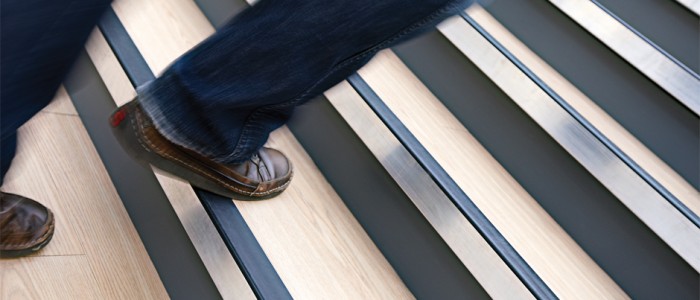I met their Research Director, Sarah back in March when I delivered a talk at the Bournemouth Care Show on the importance of good interior design in care homes. Despite repeatedly bashing the microphone with my nose when I leaned in to speak, which I felt took the polish off my presentation (the one eye thing means that I only see in 2D so have poor depth perception), Sarah introduced herself after the seminar. At this point she was unaware of my own experience but we got chatting about the importance of good interior design for the blind and partially sighted. To say that losing half my sight has opened my eyes to the importance of good design for the elderly may sound like a poor attempt at a pun, but it has. Up until last November I had paid due consideration to proper lighting and use of contrast when designing care home interiors for the elderly, but only since becoming monocular can I really understand the profound impact overlooking this can have for the visually challenged.
The prevalence of sight loss increases with age. Recent research suggests that serious sight loss affects one in eight people over the age of 70 and one in three over the age of 90. However less serous visual impairments can also seriously affect day to day living and the large majority of those over the age of sixty could benefit from better lighting in the home. Few people with sight loss are totally blind. Most have some residual vision and appropriate design can help to maximise their functional vision. If you are caring for an elderly relative or know someone who has suffered with vision loss, here are a few considerations that could make a huge difference to their day to day living:
- Improve lighting: Maximise natural light wherever possible; low sills and unfussy window treatments. Good lighting is key; under cabinet lighting in kitchens and well lit stairs so that the treads can be easily seen. Cupboards and wardrobes should be internally lit and all light sources should be shaded to avoid glare. Dimmable lighting will allow light levels to be adjusted to suit the user’s needs.
- Use colour and contrast: Paint door surrounds in a clear contrasting colour from the adjacent wall to clearly define the doorway. Contrast should be used on handles, knobs and appliances; pale coloured light switches on a dark wall will be easier to find. Garden decking steps can prove hazardous since those without the ability to see in 3D cannot distinguish between the steps; the horizontal lines just blend into each other. I know this! When considering flooring, a change in colour between two types, even if it’s the same material, can give the impression that there is a step and pattern can be confusing.
- Avoid clutter: Ensure that there is plenty of space and a logical layout for routes both in the home and in the garden. Shelves overloaded at head height and plants overhanging in the garden can be disorientating.
Those bright yellow paint lines on the nosings of the steps at train stations may not look that pretty but they certainly have a role to play.
Written by Jacqui


 As well as having written for regional magazines including
As well as having written for regional magazines including